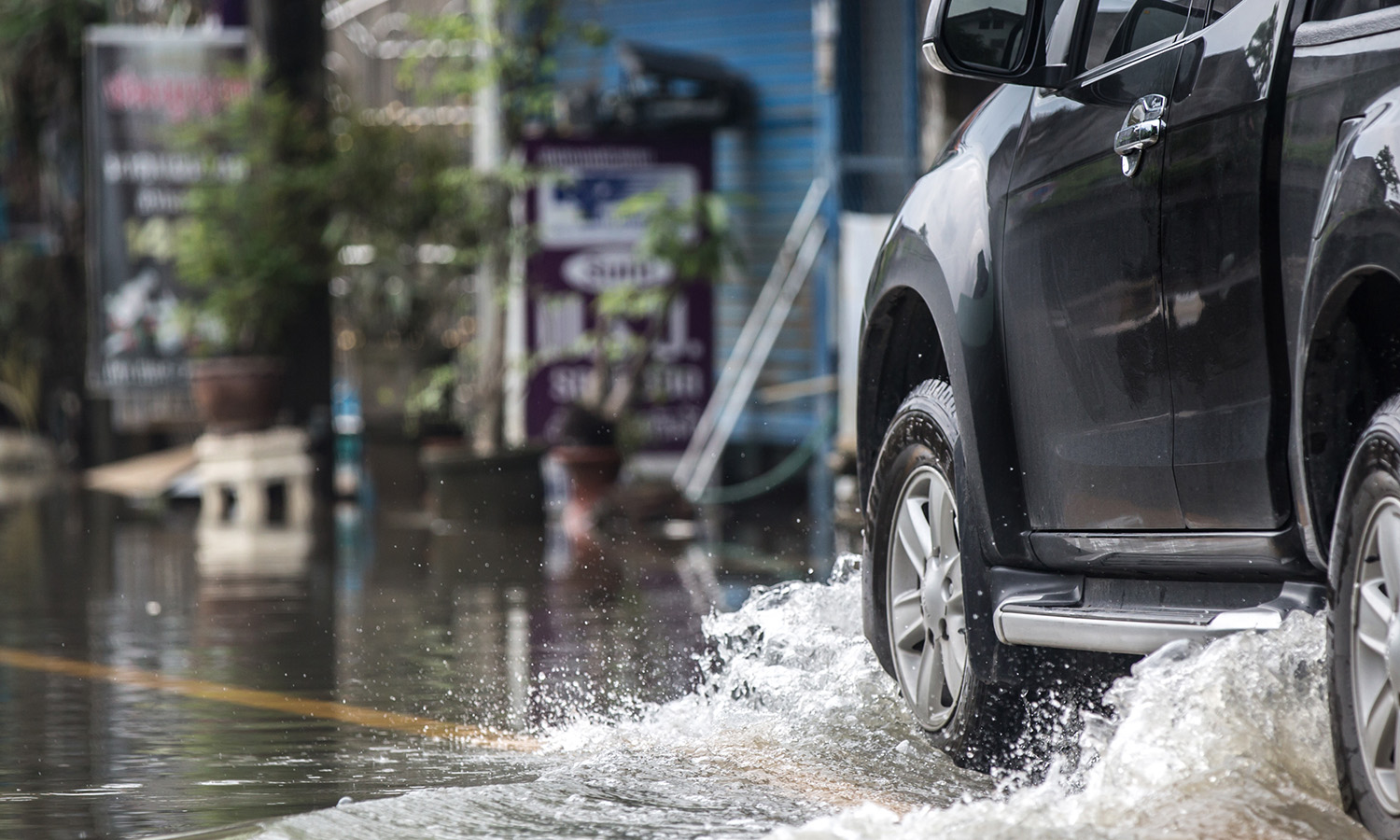Texas Driving Safety Tips: Stay Safe in 4 Seasons
From sunny spring trips along Hill Country back roads to winter-storm induced icy roads, driving in Central Texas covers a range of experiences. Each time you get behind the wheel, however, the ultimate goal is to arrive safely at your final destination.

Despite the forces of nature, the following Texas driving safety tips for every season can help you (and your loved ones) navigate extreme weather and road conditions.
Spring: Watch for wild weather
As a dynamic weather season, spring is in a league of its own. Late season ice, thunderstorms and torrential downpours can create serious potential road hazards even near your home.
Flash Floods
There’s a reason why you’ve heard the phrase, “Turn around, don’t drown.”1 With our area’s unique geography, waterways are prone to overflowing suddenly. Consequently, flooding roadways may quickly fill with fast-moving, dangerous currents that rival white water rafting.
Never, ever drive around flood barriers or disregard notices about potential flooding. As little as six inches of water can cause a car to float,2 and water on the road can obscure hazards like washed-out bridges or crossings.
Steer clear of standing water on low roadways during and immediately after heavy rains — even if it means going out of your way or postponing your trip — to avoid being swept off the road or trapped in a sinking car. What appears to be “safe” can rapidly turn treacherous as water from upstream moves swiftly into low-lying areas.
Hailstorms
Texas led the nation in major hail events3 in 2023, according to the Insurance Information Institute, with more than 450 storms causing damage.
Meanwhile, the National Severe Storms Laboratory, part of the National Oceanic and Atmospheric Administration (NOAA), reports that small hailstones can fall at speeds up to 25 miles per hour. The largest hailstones can come down at 100 mph or more.4 Even small hail can obstruct visibility on the road and damage your vehicle. Large, fast-moving hail can shatter windshields, sunroofs, and other vehicle glass, creating a serious safety hazard.
Avoid driving when hail is in the forecast. If you’re caught in a hailstorm while driving, it’s safest to pull over — under shelter if possible — and wait it out.
Tornadoes
Tornado watches and warnings understandably confuse people, especially those who didn’t grow up near Tornado Alley, a famous stretch of the American heartland known to spawn an abundance of twisters each spring. Yet grasping the difference can help you assess how safe your travel might be.
NOAA’s National Weather Service — the organization that issues both watches and warnings5— defines a watch as an alert that tornadoes are possible and a warning as notice that a tornado has been sighted or is indicated by radar.
When your area is under a tornado watch — or will be during a scheduled drive time or road trip, rethink your plans. If you’re under a tornado warning, stay off the road because there’s an immediate threat in your area.
If you encounter a tornado while you’re in your vehicle and there’s no safe shelter nearby, the Texas Department of State Health Services says you should get out,6 find a ditch or low spot (not under an overpass), lie face-down, and use your hands to protect the back of your head. Translation: Don’t try to outrun the twister in your vehicle.
Summer: All kinds of extremes
Thanks to the heat, everything can feel a little more intense during Texas summers, from temperatures to storms rolling in from the Gulf Coast. Be prepared to deal with these extremes.
Dangerous heat
An overheated engine is a hassle at the best of times. In the summer heat, especially on a rural road, it can become an emergency.
Here are some tips to keep in mind:
- Keep your car’s hoses and cooling system in good working order.
- Store bottled water securely in your vehicle in case you’re ever stranded, for your vehicle, yourself and your passengers.
- Never leave pets or people in a car in the summer heat. According to the Austin American-Statesman7, Texas is the state where the most children have died from being left in hot cars. Even with the windows rolled down or parked in the shade, an interior can heat up fast.
Tropical storms and hurricanes
High winds, tornadoes, heavy rain and flooding are the biggest risks from hurricanes and tropical storms that reach Central Texas. When this kind of storm is on the way, pay close attention to the weather and public safety warnings.
Stay off the roads if you can; if you have a problem on the road, emergency responses may be delayed while crews are stretched thin. After the worst has passed, avoid driving into standing water and watch for downed power lines in the roadway.
Fall: Changing seasons, changing hazards
The heat may have eased up from summer’s inferno, but there are new hazards to watch for on the road.
Deer in the roadway
Collisions with deer can happen year-round, but they’re most likely8 from October through December, according to the Insurance Information Institute.
Be especially careful from dusk through dawn and the hours around sunset and sunrise — as well as whenever visibility is limited by fog — so you have more time to see and avoid deer on the road.
The Texas Department of Transportation recommends slowing down9 if you see a deer near the edge of the roadway. Keep in mind that deer roam together: if you see one, there are probably more in the area, so be aware of your surroundings. If you cannot avoid a deer collision, don’t swerve10 — you might go off the road or hit another vehicle, making the collision worse.
School zones
Fall is also back-to-school time, and human nature can make this a risky time for students. The Texas Department of Transportation listed driver inattention and speed as the top factors in accidents11 in school zones or with school buses in 2023 — accidents that caused 11 deaths, 63 serious injuries, and more than 2,500 crashes.
To keep everyone safer on campus, drivers should:
- Observe school zone speed limits.
- Stay off mobile devices in school zones.
- Stop for flashing red lights on school buses regardless of which direction you’re going.
- Watch for pedestrians and bicyclists in and around school zones.
Winter: Hard-to-see hazards
Blizzards and heavy snowfalls aren’t typical winter weather events in Central Texas, but ice is — and it can be deadly.
Unexpected ice
Even in situations where surface roads don’t freeze, bridges, overpasses and flyovers can develop a thin coating of ice. On surface streets and highways, sheer layers of hard-to-see “black ice” can cause a sudden loss of control.
When there’s ice in the forecast, the Texas Department of Insurance (TDI) recommends slowing down12 and avoiding slick-looking areas. If you start to skid, TDI says the best response is to stop accelerating, gently pump the brakes, and steer away from the skid.
In the event of an accident during icy conditions, stay in your car to reduce your risk of falling or being injured if another vehicle loses control.
The takeaway
Being a careful driver in all seasons can help you keep yourself, your loved ones and your vehicle safer and make driving in Central Texas more enjoyable year-round.
Be sure your insurance is ready for any weather. Contact RBFCU Insurance Agency to learn more about auto insurance coverage options, request a quote or have us review your existing policy for added peace of mind.





.jpg?sfvrsn=b6afb2a8_4)